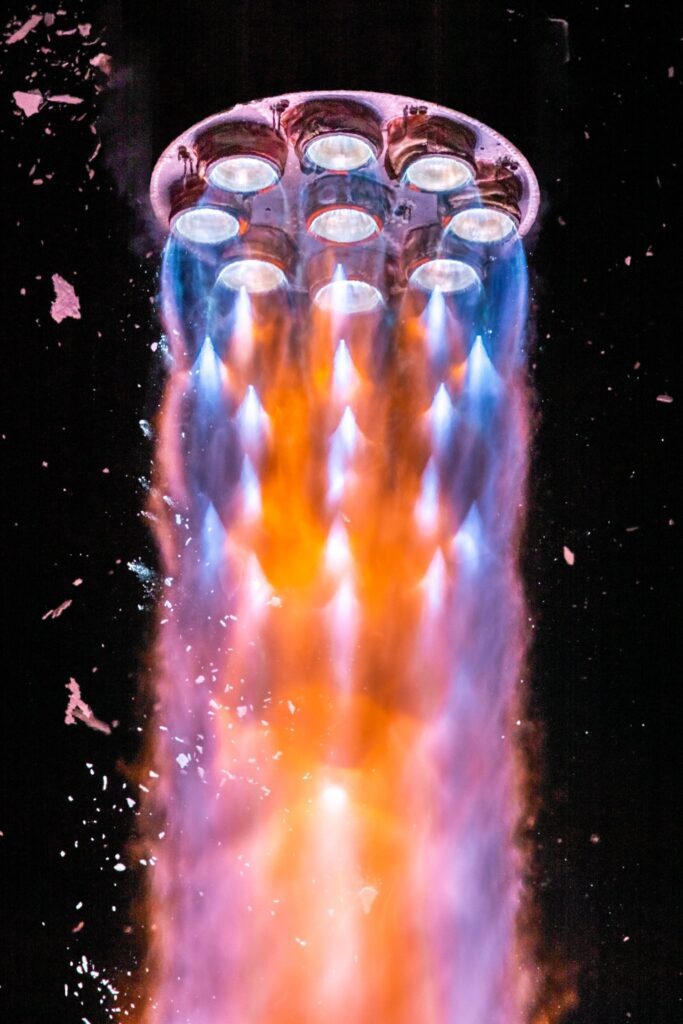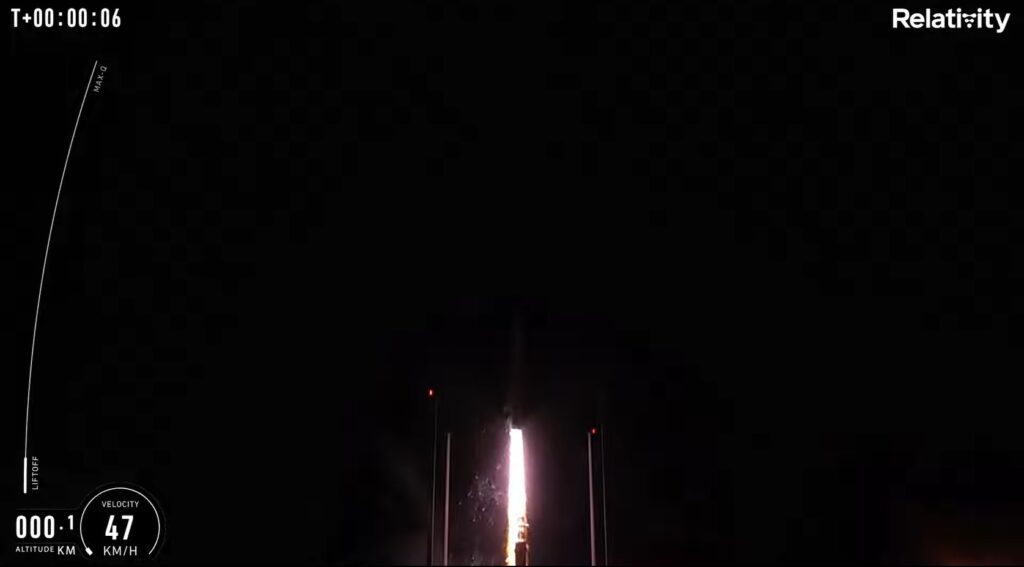The Terran 1 rocket, built by Relativity Space, failed to achieve orbit after suffering an ignition anomaly with its second stage during its maiden launch. As it was purely a test mission, the rocket was not carrying a satellite payload or releasable fairing.
The launch took place from Cape Canaveral, Florida, at 0325 GMT. Powered by nine Aeon-1 engines, the first stage – which burns liquid oxygen/liquid methane as its propellants – flew well and separated correctly at T+ 2 minutes 45 seconds. However, at this point, the second stage’s single Aeon-1 (vacuum optimised) engine briefly ignited before its thrust failed and it shut down. Terran 1 is the first rocket to be mainly 3D printed (85% of it was made using additive manufacturing).
The rocket assembly achieved an altitude of over 100 km before falling back into the atmosphere and then the ocean, probably breaking or burning up as it did so. A full investigation into the failure was announced.
In common with other commercial players, the flight was given a quirky name: Good Luck, Have Fun (GLHF). While obviously disappointed not to have achieved orbit, Relativity Space noted that it did attain some of its goals for the launch, including demonstrating the new first stage and its separation and passing Max-Q (the period of maximum aerodynamic load). Relativity Space aims to sell launches able to carry up to 1,250 kg to low Earth orbit for about US$12 million a flight.

The nine first stage Aeon-1 engines on Terran-1’s maiden flight beautifully show their dancing triangles in their supersonic exhaust flows. Courtesy: Relativity Space
David Todd contributed to this story









